Amazon Return Pallets Explained: How and Where to Buy Them

Flipping Amazon return pallets may sound like a reseller’s urban legend. However, there are plenty of success stories across the internet that will show you how real it is.
In today’s world, more online shoppers mean more returns. Not every returned item makes it back to the warehouse. The surge in consumer waste (due to returns) has sparked a quiet but powerful shift in how smart sellers source inventory.
That’s why Amazon return pallets have become the Swiss-army knife of modern inventory strategy. They offer flexibility, affordability, and sustainability all in one bundle. For sellers, this is about turning surplus into opportunity and waste into revenue. Now, when efficiency matters more than ever, these pallets are proving to be the go-to solution for building a profitable and agile resale business.
From $85 Amazon return pallets to bulk Amazon warehouse return pallets sold online, these Amazon warehouse return pallets are packed with returned, overstocked, or shelf-pulled items ready for resale.
Whether you’re searching “Amazon return pallets near me” or learning about other reliable sources, this guide will show you where to buy Amazon return pallets and how to flip them into real, repeatable profit, of course, with caution.
At SellerApp, we’ve worked closely with sellers using this exact model. They’ve scaled from curious side hustlers to profitable resellers making millions in revenue. By pairing smart sustainable sourcing with sharper data decisions, they wrote, they paved their way to success, so here’s the roadmap.
What Are Amazon Return Pallets?
Amazon Return Pallets or Amazon Liquidation Pallets are large wooden crates that Amazon uses to sell returned products in bulk to sources such as liquidation companies, wholesale buyers, resellers, and small business owners looking to flip inventory for profit.
Resellers can either refurbish or sell items as-is, depending on the item’s condition, the resale platform, and their own capabilities.
These Amazon liquidation pallets can contain various products, like electronics, clothes, books, furniture, and more. These products can be used, damaged, defective, or unwanted by Amazon’s customers.
Amazon organizes these products into different pallets and sells them to large liquidation companies or individual customers at discounted prices. Once you know exactly how to buy Amazon return pallets, you’ll find that it’s one of the most efficient ways to source high-quality items for resale.
Why Are Amazon Return Pallets Popular Among Resellers?
The reason so many sellers are piling into Amazon return pallet auctions boils down to three things: margin, volume, and agility.
Keep reading as we elaborate:
1. It’s like a clearance sale for resellers!
Imagine paying 30–70 % less than MSRP for products that your competitors will buy at wholesale.
That discount gives you enough room to cover repair costs, Amazon fees, even the occasional dud, and still turn a solid profit.
When pallet prices start as low as about $100, the risk‑to‑reward ratio skews dramatically in your favor.
2. Category freedom means pivot power
Because Amazon sells almost everything, Amazon warehouse return pallets look like a vivid catalog.
It may contain laptops, athleisure, espresso machines, nursery décor or anything under the sun. That variety lets you test new niches really fast.
Maybe you can double down on the winners and quietly ditch the underperforming ones, without negotiating with suppliers each time.
3. Data turns the “mystery box” into a spreadsheet exercise
Most reputable auction houses (such as Liquidation.com and BULQ) attach manifests with UPCs, condition codes, and unit counts.
Plug that into your favorite profit‑calculation tool (or SellerApp’s FBA calculator) and you’ll know the expected selling price, inventory charges, and FBA fees.
So you get to mitigate the risk before you place a single bid.
4. The infrastructure is plug‑and‑play
Amazon’s native Liquidation Auctions handles freight quotes, payment escrow, and inspection right out of the gate. Solo business owners can get enterprise‑grade logistics without a broker or leasing warehouse space ig they opt for this particular source.
5. Sustainability in profitability
Every Amazon return pallet you buy signals that you support reuse over waste. It communicates the same to Amazon, which prefers liquidation to disposal.
Note: Amazon doesn’t endorse buying Amazon return pallets publicly.
How Do Amazon Warehouse Returns End Up in Pallets?
Not every product that is returned to Amazon finds a new home on the digital shelf directly. Some go down a different path, which ends in bulk liquidation, and the rest are discarded. Here’s how it happens:
1. Returns show up, and the system kicks in.
Once a customer returns an item, it heads straight to an Amazon processing center. From there, the process of sorting and palletizing Amazon returns begins.
2. Every item undergoes checking.
Using a mix of automation and trained teams, Amazon checks the condition of each product. They consider its condition, say if it’s opened but working, or damaged beyond repair, so that each item gets tagged accordingly: Like new, used, damaged, or unsellable.
3. If it’s not worth the shelf space, it’s flagged.
Amazon’s goal is to move inventory smartly. So, if an item is low-value, frequently returned, or just not worth the trouble to inspect and relist, it’s marked for liquidation.
4. That’s where pallet-building starts.
Flagged products get grouped into bulk lots. Sometimes they’re sorted by category, such as electronics, home goods, and apparel. Sometimes it’s a mixed bag. Either way, it’s about volume over precision.
5. Packing and shipping.
The grouped items are packed onto pallets. Once wrapped and ready, they’re sold through trusted liquidation partners like B-Stock or Liquidation.com.
Amazon warehouse return pallets are how unsellable inventory gets a second shot. It’s smart, efficient, and built for sellers who know how to turn “unwanted” into unexpected wins.
How much do Amazon Return Pallets cost?
Most Amazon returns pallets for sale land somewhere between $300–$400, depending on what’s inside. But here’s where it gets interesting.
An $85 Amazon return pallet might include everyday essentials, low-cost, easy-to-move items perfect for beginners. On the other hand, a pallet packed with electronics, power tools, or branded gear could easily cross $1,000.
You’ll also want to factor in:
- Shipping costs
- Refurbishment or repackaging
- Time and effort to resell
So, knowing how to buy Amazon returns pallet smartly, not just economically, is what sets apart casual buyers from profitable sellers. Many resellers start by typing Amazon return pallets near me into Facebook or Google, and end up finding reliable, recurring sources right in their city
Where to buy Amazon return pallets? (Amazon return pallet for Sale)
Finding the right pallet isn’t luck, it’s a system. Below is how full‑time resellers find Amazon return pallets for sale.
1. Start in Amazon’s own backyard
Amazon Liquidation Auctions on B-Stock is Amazon’s official platform for selling returns and extra inventory. It is the point to start if you’re wondering where to buy Amazon return pallets.
You register as a business buyer, review a manifest that lists every ASIN (A manifest is a detailed document that includes: Product names, ASINs, quantities, original retail prices like MSRP, item condition e.g., New, Like New, Used, Salvage), then bid against other sellers.
It’s transparent, highly competitive, and the safest way to know exactly what’s landing on your dock.
2. Broaden the net with multi‑retailer exchanges
Platforms like Liquidation.com and Direct Liquidation mix Amazon pallets with returns from Home Depot, Walmart, and more. You’ll see both manifested lots (clear, but pricier) and unmanifested gambles (cheaper, but you own the surprise).
Note: Always download the shipping quote first, as freight can nuke an otherwise great deal.
Below, we’ve curated a list of the best suppliers for Amazon return pallets for sale, ensuring that you get premium inventory without unnecessary risks.
UpLiquidation
UpLiquidation offers one of the largest selections of Amazon liquidation pallets in the United States. Most importantly, it was named the best liquidation company in the USA since 2015.
With stringent quality control and detailed manifests, UpLiquidation is perfect for high-volume buyers looking for fast processing. In fact, the fast processing is off the charts. Orders take a mere 4-6 hours with immediate freight quotes and dispatch notifications.

B-Stock
B-Stock is another major player in the game. It’s a rather unique platform as it has exclusive brand partnerships with a ton of major retailers like Amazon, Home Dept, Walmart and Samsung. Meaning, unlike most platforms, you can access pallets that are directly sourced from Amazon, Walmart, Home Depot, etc.
As for the actual method of acquiring the pallets, the platform offers a bidding system with binding shipping costs. And a filter option to search for the perfect Amazon return pallets to find the right inventory.

Direct Liquidation (US and Canada)
Direct Liquidation is a liquidation marketplace that partners with marketplaces like Walmart, Target, and Amazon to sell return pallets in online auctions.
Moreover, this retail-endorsed platform has been featured in Forbes, Inc., and Reuters, adding to its credibility. You also get access to manifests. Meaning there’s a ton of transparent information on whether the pallets contain salvaged, shelf-pull, and returned products that are clearly labeled.
We recommend Direct Liquidation primarily due to its exclusive deals. This platform offers a broad range of liquidation pallets, including categories like electronics, appliances, furniture, etc. Direct Liquidation works directly with big retailers and marketplaces, ensuring the authenticity of the products.
The platform offers outstanding customer service to buyers.
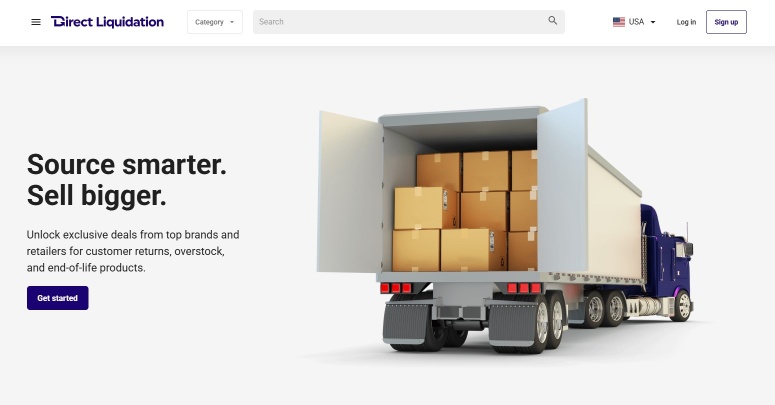
Liquidation.com (US)
Similar to Direct Liquation, Liquidation.com also sells return pallets from Amazon and other marketplaces. This platform usually sells electronics, household appliances, computers, and industrial and vehicle spare parts.
The price usually starts from $100, but it can increase during the auction. So if you’re searching for ‘$85 Amazon return pallet near me’ do not end up here unless you want to go a little ahead of your budget.
Non-US customers need to pay via wire transfer. And if the purchase value is above $5,000, then a wire transfer is mandatory for both US and non-US buyers.
Depending on the product or seller, you may or may not get any warranty coverage or guarantee for the condition or functionality of the items you buy.
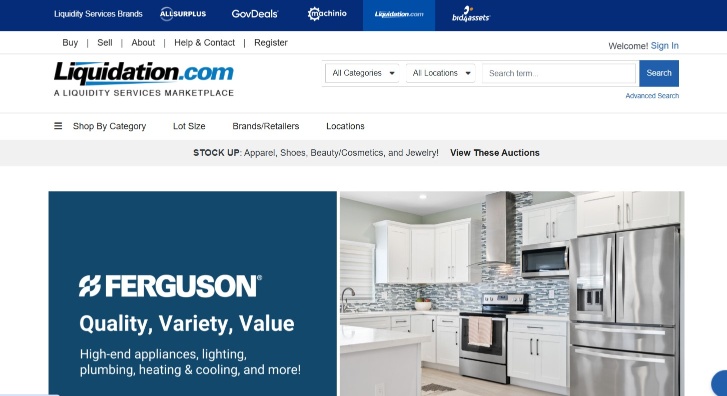
BULQ (US)
BULQ is another Amazon return pallet company headquartered in the United States that lists new return pallets for sale three times every day. The pricing of these items varies depending on the seller and product category. Some prices are fixed, and others are sold through a 48-hour auction.
You can easily browse the clearance section without logging in, but to purchase, you must register on the platform and provide resale certification during the transaction.
BULQ also provides shipping services for addresses within the United States; in some cases, a flat shipping fee of $30 is applied.
BULQ offers a wide range of products from big-box store retailers in categories like apparel, home and garden, toys and baby, electronics, and more. New inventory arrives three times daily, which provides continuous opportunities for sellers.
While manifest information is provided, buyers may have limited ability to customize or choose specific items within a pallet.

888Lots
888Lots makes it super easy for new sellers to get started, as it offers pallets with low minimum order quantities and discounts on first-time purchases. Specifically, you can choose from small, medium, large, or even truckload options. One of the benefits is that the platform offers a 60% discount on first orders.
Each pallet contains a detailed description of the products, including Amazon ASIN numbers, Amazon UPC codes, descriptions, Amazon reviews, sales rank, and a downloadable manifest.
However, there’s no guarantee of the product condition you’ll get after purchasing the product. Buyers have to bear the shipping and handling costs after purchasing the pallets.
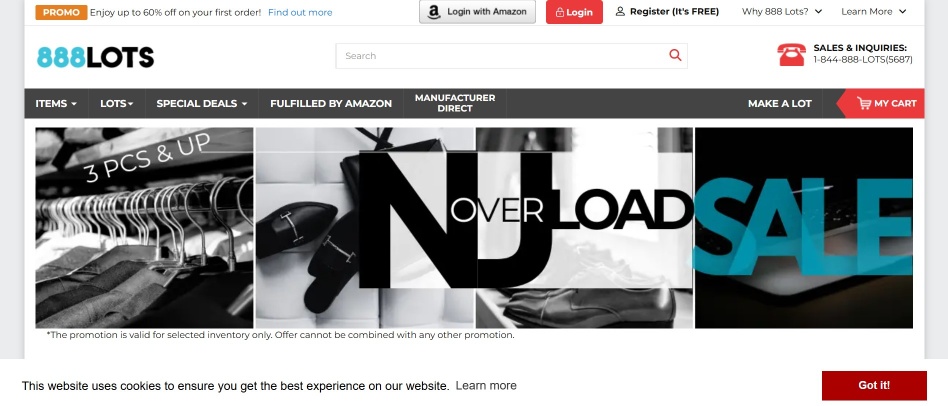
BlueLots
BlueLots is hands down the best Amazon liquidation pallets platform when it comes to nice product categories. In fact, you can actually filter pallets by category, condition, and auction type. It also comes with a simple UI that’s easy to use, which will help you search and buy products quickly.
There are also specialized categories that focus on home goods, electronics, sporting goods, and clothing. Of course, like many liquidation platforms, you have an auction and instant buy option.
Ultimately, buying Amazon liquidation pallets and return pallets is one of the most effective ways to secure profitable inventory. However, it’s important to understand that purchasing from the wrong source can result in acquiring pallets with faulty products that will turn out to be more of a liability than an asset.

3. Map out local warehouses before you buy online
If you’ve been wondering where to buy Amazon return pallets locally, use LiquidationMap.com (almost like a Google Maps for pallet dealers) to locate vetted warehouses and bin stores within driving distance.
A quick phone call lets you confirm truck‑fresh loads and visiting hours before you burn gas.
Some of the best deals come from simply searching for ‘Amazon return pallets near me’ and picking up locally. No freight, no waiting, many seasoned sellers incorporate this source to dig through some unexpected finds.
4. Don’t sleep on “bin‑store” treasure hunts
Brick‑and‑mortar bin stores like Where Ya Bin, Dream Deals, etc. chop truckloads into $1‑to‑$14 dig bins.
It’s messy, time‑intensive, but perfect for test‑driving the niche without dropping $500 all at once. Searching ‘Amazon return pallets near me’ on Google can also connect you to bin stores and small liquidation hubs that never show up online.
5. Mine Facebook and eBay, but keep your guard up
Local sellers unload single pallets on Facebook Marketplace and eBay. Great for pickup‑today convenience, but lean on social proof like ratings, live‑streamed unload videos, and clear photos. If your risk appetite is high, you can give it a try.
Some sellers follow Reddit’s r/Flipping community to find Amazon return pallets for sale, and it has one golden rule here: “If you can’t see the pallet, assume it’s junk.”
But at the end of the day, profit comes from disciplined sourcing, not blind optimism.
| Source | Type | Pros | Cons |
|---|---|---|---|
| B‑Stock | Manifested auction pallets | Transparency, direct from Amazon | Competitive auctions, B2B only |
| Liquidation.com / Direct | Mixed pallets, shipping quotes | Wide selection, manifests available | Risk of unsold/defective goods |
| eBay / FB Marketplace | Local pickup by individuals | Flexibility, quick deals | Scams, poor seller reliability |
| Local Bin Stores / Warehouses | Brick-and-mortar liquidation | Inspect in person, negotiate | Limited inventory, local to your area |
How to buy Amazon return pallets: Step-by-step guide
Follow this step by step guide on how to buy Amazon return pallets:
Step 1: Understand what you’re getting into
Before you buy, know that Amazon return pallets are bulk lots of customer-returned, overstocked, or shelf-pulled products. They may include a mix of working, damaged, or incomplete items.
Note: This is a high-risk, high-reward model, not a guaranteed profit.
Step 2: Pick your buying style
When it comes to buying Amazon return pallets, there are two ways to go. Know exactly what you’re getting or roll the dice and hope for the best.
Manifested Amazon return pallets: For the calculated reseller
If you like data, clarity, and control, manifested pallets are a smart choice. You’ll get a detailed list (aka a manifest) showing exactly what’s inside. It’s like buying with a blueprint. Yes, you’ll pay a bit more upfront, but you also reduce risk and avoid those moments of frustration where you don’t really want what you received.
We suggest a manifested Amazon pallet for beginners, online resellers, and anyone who likes to plan before they profit.
Unmanifested Amazon return pallets: For the risk-tolerant sellers
Unmanifested Amazon return pallets are a mystery. No manifest. No preview. Sometimes you strike gold. Other times, it’s 47 phone cases and a broken air fryer.
These pallets are cheaper and often sold locally. If you’re buying in person and love a good gamble, this path could pay off. We suggest an unmanifested Amazon return pallet for hustlers, flea market flippers, and anyone who’s okay with uncertainty in exchange for bigger upside.
So, if you’re wondering how to buy Amazon return pallets, knowing which one’s right for you is crucial.
If you’re new, start with manifested pallets. They teach you how to evaluate risk and ROI. Once you’ve got your system down? Add in a few unmanifested Amazon return pallets, gambles and see what sticks. If you’re wondering, both paths work. The key is knowing your style and owning it.
Now that you’ve decided how you want to buy (manifested vs. unmanifested), it’s time to pick where you’ll actually get your Amazon return pallets from. If you’re just testing the waters, start with a $85 Amazon return pallet. It’s low-risk, high-learning, and serves your purpose.
Step 3: Choose a Platform to Buy From
In the previous section, we’ve added our thoughts on where to buy Amazon return pallets. So, choose one according to your requirements.
But remember, shipping costs can sneak up fast. Always check freight quotes before you click “bid.”
Because these platforms are built for resellers and businesses, not everyday shoppers. Amazon and its liquidation partners want to make sure buyers are legitimate Amazon sellers, so having a business account is mandatory.
Step 4: Research the Seller well
You’ve found a seller offering Amazon warehouse return pallets, great! But before you buy into a ‘$85 Amazon return pallet near me’ ad, make sure the seller is transparent and offers photos or manifest details before pickup.
Right after you decide where to buy Amazon return pallets from, research the source well. Because in this game, who you buy from matters just as much as what you buy.
The Amazon return pallet industry has exploded, and with it, so has the number of sellers cutting corners. Some cherry-pick the good stuff. Some mislabel junk pallets. Others vanish after a Venmo payment.
The fix is to research like a pro before investing.
So, what to look for in a trustworthy Amazon Return Pallet seller?
1. An active Facebook presence
The best local sellers who offer Amazon return pallets for sale often operate through Facebook Marketplace or private groups. You must have questions, such as: Are they posting new Amazon return pallets regularly? Do they share unloading videos? Are people engaging in comments? Are there any previous customers in the comment section?
A seller who talks to their customers, answers questions, and posts updates is the green flag to chase.
2. Transparent inventory drops
Reputable sellers aren’t shy. They’ll post live videos or walkthroughs of inventory as it comes in.
This gives you a clear look at the condition of pallets before they’re stacked and sold. If they don’t show you what’s behind the curtain, ask yourself, what’s holding them back?
3. Real buyer feedback
Scroll through their posts.
Are customers posting photos of what they got from their Amazon return pallets? Are they tagging certain sellers? Are there complaints? Are the complaints being addressed?
No feedback is worse than bad feedback.
Look for a seller with a community, not just a listing.
Note: Some sellers quietly sort through the pallets and pull the valuable items before selling what’s left to you. That’s called cherry-picking, and it crushes your chances of turning a profit.
Always ask if the Amazon return pallets for sale are untouched or are direct off the truck. That’s the only way to ensure you’re getting what Amazon actually sent out.
Step 5: Set your budget & know the margins
You’re excited to dive into Amazon return pallets, and we get it. The potential is massive. Sellers have made up to $12 million selling them. But before you start hauling inventory and planning your resale strategy, there’s one thing you need to get really good at: knowing your numbers.
Because while anyone can buy an Amazon return pallet, profitable resellers master their margins first.
First, understand what you’re spending limits are.
Pallet Cost: $300–$600
This is the typical range for Amazon return pallets on platforms like Liquidation.com, Direct Liquidation, and local warehouses. Expect this to go up if you’re chasing categories like electronics or buying manifested pallets with high resale potential.
Shipping: $100–$300+
If you’re buying an Amazon return pallet online, shipping can sneak up on you. Resellers on forums report paying just as much for freight as they did for the pallet. So if you’re budgeting $500 for a pallet, you should realistically expect to spend $600–$800 total.
If possible, buy in person and skip shipping entirely. It’s not just cheaper, but it gives you full visibility before you commit.
Smart resellers don’t practice buying Amazon return pallets based on cost, they consider value.
That means:
- If a pallet has $2,000 worth of MSRP, you should aim to pay no more than $400–$600.
- That 20–30% window gives you enough room to cover shipping, test/refurbish items, and still make a margin on resale.
When you buy an Amazon return pallet, you’ll often receive a manifest, a list of products with their original MSRP (Manufacturer’s Suggested Retail Price). Let’s say that the manifest includes a hoverboard listed at $200. That might sound like a win, right? But here’s the catch:
You won’t get the full $200 when you resell it.
This is because of platform fees (Amazon, eBay, etc.), shipping costs, and the reality of buyer behavior (people expect deals on used or returned items).
After all that, your actual resale price will likely be $80 to $100 and that’s if the item works perfectly and has no missing parts.
So, across your entire pallet, you should expect to make back about 40–50% of the original MSRP, not 100%. Sometimes more, sometimes less. But if you’re pricing your purchase assuming full retail value? You’re setting yourself up for disappointment.
Step 6: Pick the right type of Amazon Return Pallet
You’ve set your budget for buying Amazon return pallets, crunched the numbers, and you’re ready to make your first move. But here’s the part most people skip and regret later choosing the right type of pallet for your resale strategy.
The 3 most common Amazon Return Pallet types
Let’s walk through the most commonly chosen Amazon return pallet options:
1. General Merchandise Pallets
These are the jack-of-all-trades pallets, including home goods, kitchen tools, toys, small electronics, office supplies, etc.
Why choose General Merchandise Amazon Return Pallets: They’re budget-friendly and full of sellable everyday goods. Just know you’ll be moving lots of low-ticket items.
2. Electronics Pallets
These pallets include headphones, smart watches, chargers, tablets, speakers, and more. Some are customer returns. Others are shelf-pulls or overstock.
Why choose Electronics Amazon Return Pallets: It has a high upside if you’re willing to test, repair, or part out items.
Note: Read manifests closely. Look for keywords like “tested,” “shelf-pull,” or “uninspected returns.”
3. Apparel & fashion pallets
These include clothing, shoes, handbags, and accessories, mostly returns or off-season inventory.
Why choose Apparel & fashion Amazon Return: These are easy to store and ship. But fashion trends fade fast, move quickly or get stuck with dead stock.
Amazon Return Pallet Comparison
| Pallet Type | Great For | Condition | Risk Level & Notes |
|---|---|---|---|
| General Merchandise | eBay, Facebook Marketplace, flea markets | Mixed; new, open-box, used | High variance in value and quality. Expect to sort through a lot of low-ticket items |
| Electronics | Amazon FBA, eBay, tech-savvy sellers | Often untested, some shelf-pulls | High failure rate. 30–40% could be damaged, DOA, or missing accessories |
| Apparel & Fashion | Poshmark, Whatnot, Mercari, boutique sellers | Mostly new or worn once | Trend-dependent, sizing, seasonality, and brand relevance matter a lot |
What Should I Consider Before Buying an Amazon Return Pallet?
Walking into the world of Amazon warehouse return pallets without a plan is like playing poker with the cards face down. Experienced resellers run through the checklist below every single time because one overlooked detail can erase an entire margin.
1. Source Credibility is Everything
The platform you buy from determines everything downstream, from product authenticity to condition accuracy. If you’re buying through Amazon Liquidation Auctions (via B-Stock), Direct Liquidation, or Liquidation.com, you’re purchasing from vetted pipelines. These platforms have accountability, documentation, and terms you can actually rely on.
By contrast, buying from local Facebook groups or unknown resellers is cheaper but is risky. Many of these sellers “cherry-pick” the good items, rewrap the leftovers, and sell them as complete pallets.
Always check if the seller provides a manifest, images of the actual pallet, and their physical business location. If not, proceed with caution.
2. The Manifest is a “Blueprint”
A manifest lists the ASINs, UPCs, item descriptions, estimated MSRP, and condition of every item in the pallet. This lets you reverse-engineer the potential resale value and determine if the purchase fits your model.
Take 3–5 ASINs from the manifest and run them through eBay’s sold listings. Ignore MSRP, and focus on actual resale prices, item rank, and sell-through speed. Your margins live and die by that delta.
3. Know the Real Cost, Not Just the Sticker Price
A pallet listed at $400 isn’t a $400 investment. Unless your total landed cost is under 30% of the total pallet MSRP, your profit ceiling shrinks fast.
Beginners who mostly worry about how to buy an Amazon returns pallet often forget that margin isn’t just about price, it’s about total friction between purchase and resale.
4. Match the Pallet to Your Operational Capability
Each pallet type demands a different workflow. Electronics might offer 50–70% ROI but require testing, refurbishment, and return mitigation. Apparel is easier to process but moves slower unless you’re on the right platforms like Poshmark or Whatnot.
Start with what you know. If you’ve never sold tools, don’t start with a 600-pound pallet of Ryobi power drills.
5. Have a Post-Sale Plan for Unsellables
Not everything will sell from the Amazon returns pallets that you bought. Even on high-quality pallets, expect 15–25% of items to be damaged, untested, outdated, or missing pieces. Know your plan for these in advance:
- Can you harvest for parts?
- Do you have local buyers for salvage goods?
- Will you donate for write-offs?
This is how pros turn “losses” into controlled margins.
Evaluating the Condition of Amazon Warehouse Return Pallets
| Code on Manifest | Meaning | Typical Failure % | Optimal Buyer Profile |
|---|---|---|---|
| New / Overstock | Never opened, often shelf‑pulls from FBA | 0–2 % | Beginners; plug‑and‑play resale |
| Like New | Open box, pristine, all parts present | 5–10 % | Amazon FBM / eBay “open‑box” sellers |
| Uninspected Returns | Customer returns which are untested | 20–30 % | Volume sellers with testing crew |
| Tested Working | Verified power‑on and basic functions | 5–15 % | Tech refurbishers needing speed to market |
| Salvage / Defective | Broken or missing parts | 40–60 % | Parts harvesters, repair experts |
More aspects to consider before buying Amazon return pallets:
- Packaging Uniformity: Shrink wrap that looks freshly redone can indicate cherry‑picking.
- Weight vs. Manifest: If a pallet is light for its declared contents, suspect parts removal.
- High‑Density Single SKU: Manifests with 300 identical phone cases at $19.99 MSRP inflate value but kill velocity.
- Date Codes: Electronics older than 18 months often miss firmware updates and fail the open‑box market.
- Battery‑Powered Items: Lithium shipping surcharges crush margin if you’re not prepared.
Master the source, master the math, master the condition codes, and the margins will follow.
Challenges and Risks of Buying Amazon Return Pallets
Amazon return pallets reselling often looks like a shortcut to explosive profits. $2,000 of inventory for just $300? It sounds like a reseller’s dream. But dreams, like pallets, come with hidden weight. Here’s what the seasoned sellers already know, and what you’ll want to know about the associated challenges and risks of buying Amazon return pallets.
1. Unpredictable Item Condition
This is a no-brainer. Even if the manifest looks promising, it’s still a box of returns. Some items are flawless. Others are halfway to the landfill.
Even on a well-packed pallet, 20–30% of items might need repair, missing parts, or be totally unsellable, especially if it is unmanifested.
That $85 Amazon return pallet might look like a gamble, but for the right seller, it’s a goldmine in disguise. But make it a point to sort workflows and triage good vs. repairable vs. junk. Seasoned flippers also start with lower-risk categories like kitchenware or apparel before diving into electronics, where defects are costly.
2. Shipping Costs That Creep Up Fast
That $300 pallet isn’t your final cost. Shipping can quietly inflate your total spend, especially if you’re buying cross-country or via third-party platforms. Residential delivery fees, liftgate surcharges, and freight minimums, all of it can add up. Easily an extra $100–$300 per pallet.
They buy local. It comes with more control and fewer surprises. Plus, seeing an Amazon return pallet in person lets you inspect before you commit.
3. Scams & Shady Sellers
The Amazon return pallet industry has its gray zones. Local sellers often list a $85 Amazon return pallet near me on Facebook Marketplace or liquidation groups.
Those might look pickup-ready but may not be at their best quality. From “mystery boxes” packed with dollar-store overstock to cherry-picked pallets where the best items have been removed, it’s always a risk!
4. Not Everything Will Sell (and Not at MSRP)
Retail value is not always equal to resale value. That $90 name-brand speaker might sell for $45 on eBay or not at all, if demand has dried up.
5. Space Becomes a Real Problem
A single Gaylord pallet weighs upwards of 500 lbs and takes up serious real estate. Multiply that by even two or three pallets, and your garage becomes a warehouse overnight.
Set up a dedicated space with labeled bins, storage shelves, and clear inventory zones. Logistics isn’t just about shipping, it’s about keeping your sanity intact as inventory grows.
Pros and Cons of Selling Amazon Return Pallets
If you’re seriously considering stepping into this world, you need more than excitement; you need clarity. You don’t need thousands to get started; just a $85 Amazon return pallet and the right resale platform.
Here’s a breakdown of what’s great, what’s challenging, and what smart sellers learn to work around.
| The Upside | The Downside |
|---|---|
| Low upfront investment: You pay 20–30% of MSRP for $800+ worth of goods (sometimes as low as $85). | Unpredictable quality: Up to 30% of items may be damaged, missing parts, or unsellable. |
| Category testing freedom: Explore new niches without long-term commitments. | Shipping costs creep: Freight, liftgates, and handling can double your cost. |
| No supplier dependency: No MOQs, no contracts, no waiting on manufacturers. | Time-consuming: Sorting, listing, cleaning, and fulfilling takes real hands-on effort. |
| Local resale channels: Sell bulky goods on Facebook or OfferUp with no platform fees. | Scams exist: Unverified sellers, cherry-picked pallets, and fake manifests are common risks. |
| Scalable systems: Repeatable process once you find your groove. | Storage constraints: One pallet = 500+ lbs; space disappears fast without a setup. |
Final thoughts: Is it Profitable to Resell Items from Amazon Return Pallets?
Yes, selling Amazon return pallets can be profitable. But do not expect instant results. Even Amazon return pallet millionaires ask you to stay patient and keep testing till you hit your big margin. Many first-time flippers scored their initial profits from a single $85 Amazon return pallet bought locally.
Ultimately, the people who actually profit from Amazon return pallets are the ones who show up consistently. They’ve learned how to spot a good manifesto. They understand which categories sell fast and which ones sit.
Most importantly, they’ve built systems to deal with the chaos inside every box. If you’re in it for the long game, that ‘$85 Amazon return pallet near me’ could be the first step to building your own resale system, if you treat it like a business, not a gamble.
Do you have any more questions regarding Amazon Return Pallets? Let us know in the comments below!
Additional read:
What is Amazon Premium A+ content?
How does Amazon Marketing Cloud work?
A Joint Analysis by Payoneer and SellerApp
Amazon Catalog Management: The Only Guide You’ll Ever Need
Firefighting Negative Reviews on Amazon: A Seller’s Guide
11 Amazon Seller Forums & Communities That Are Highly Useful
How to Rank Your Products for Amazon A10 Algorithm
Target Return Pallets: What You Need to Know
Walmart Return Pallets for Sale: Everything You Need to Know





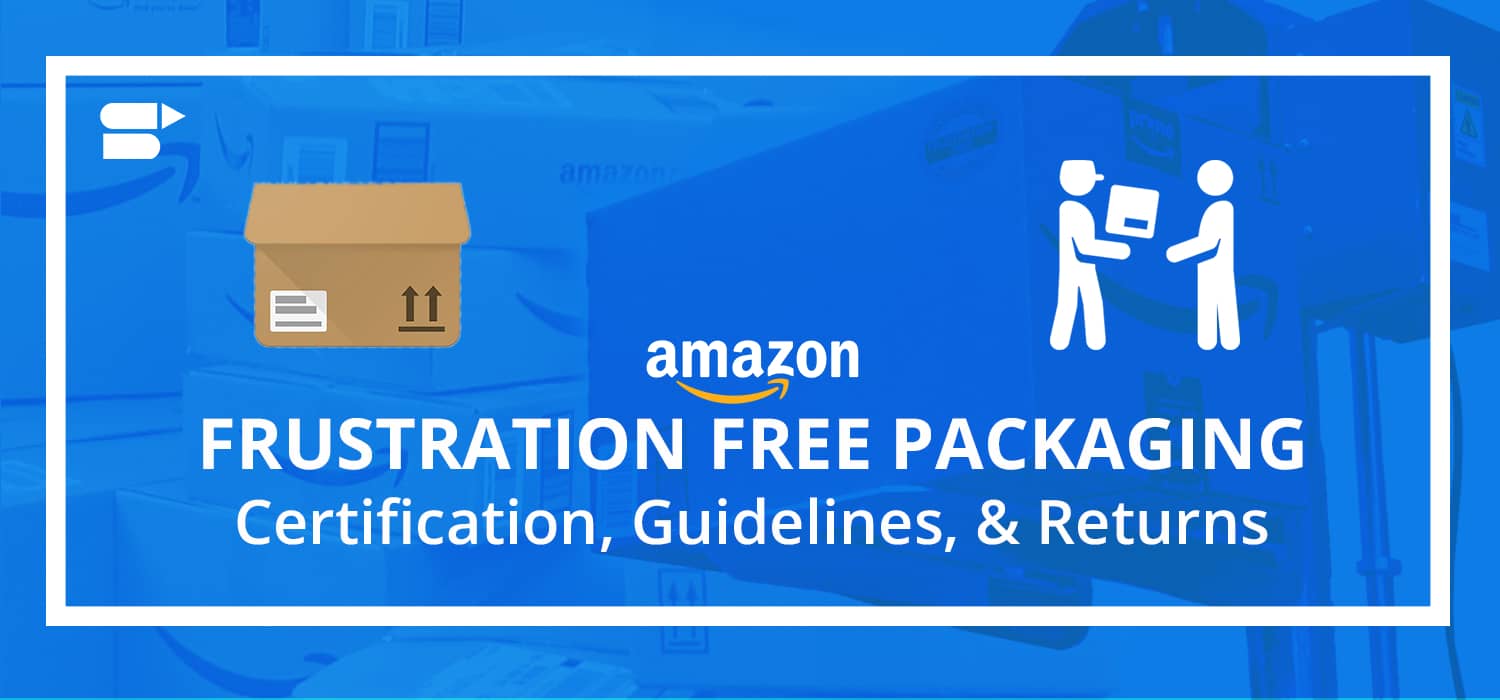



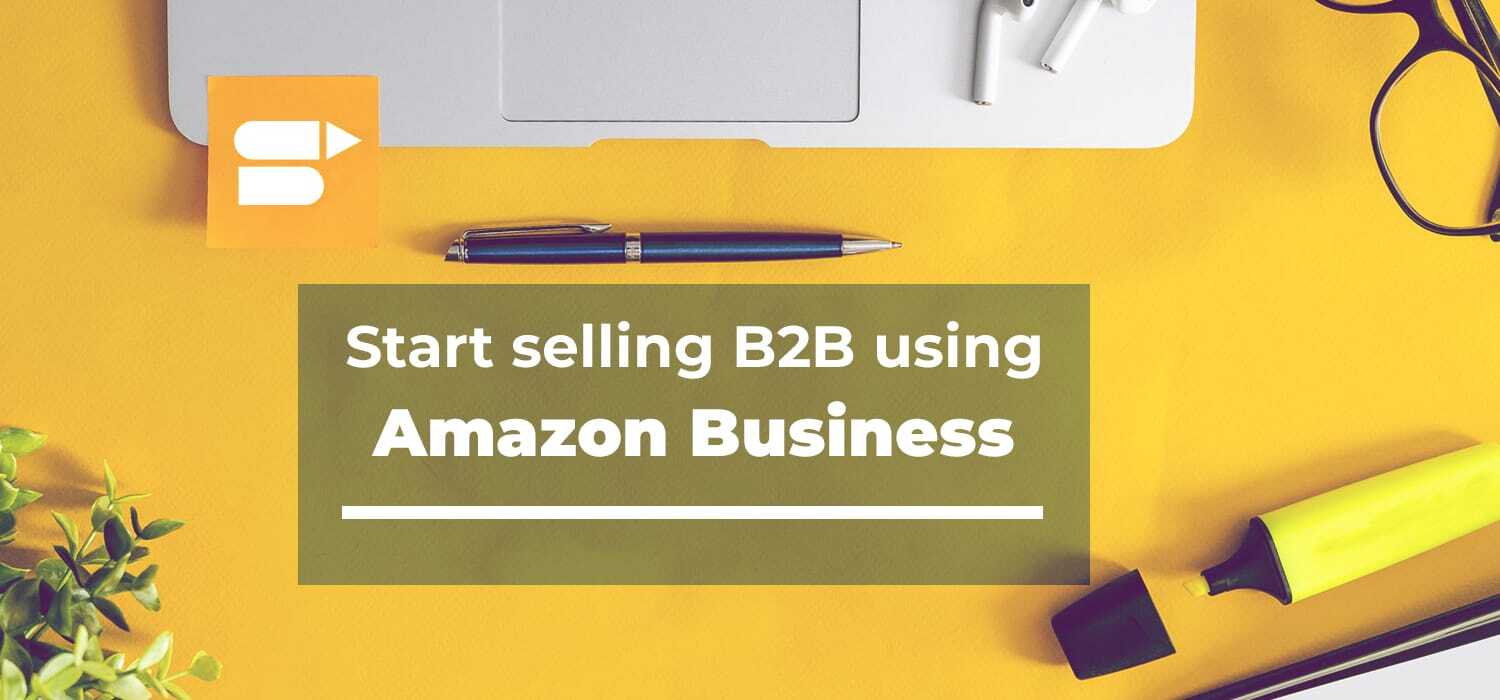
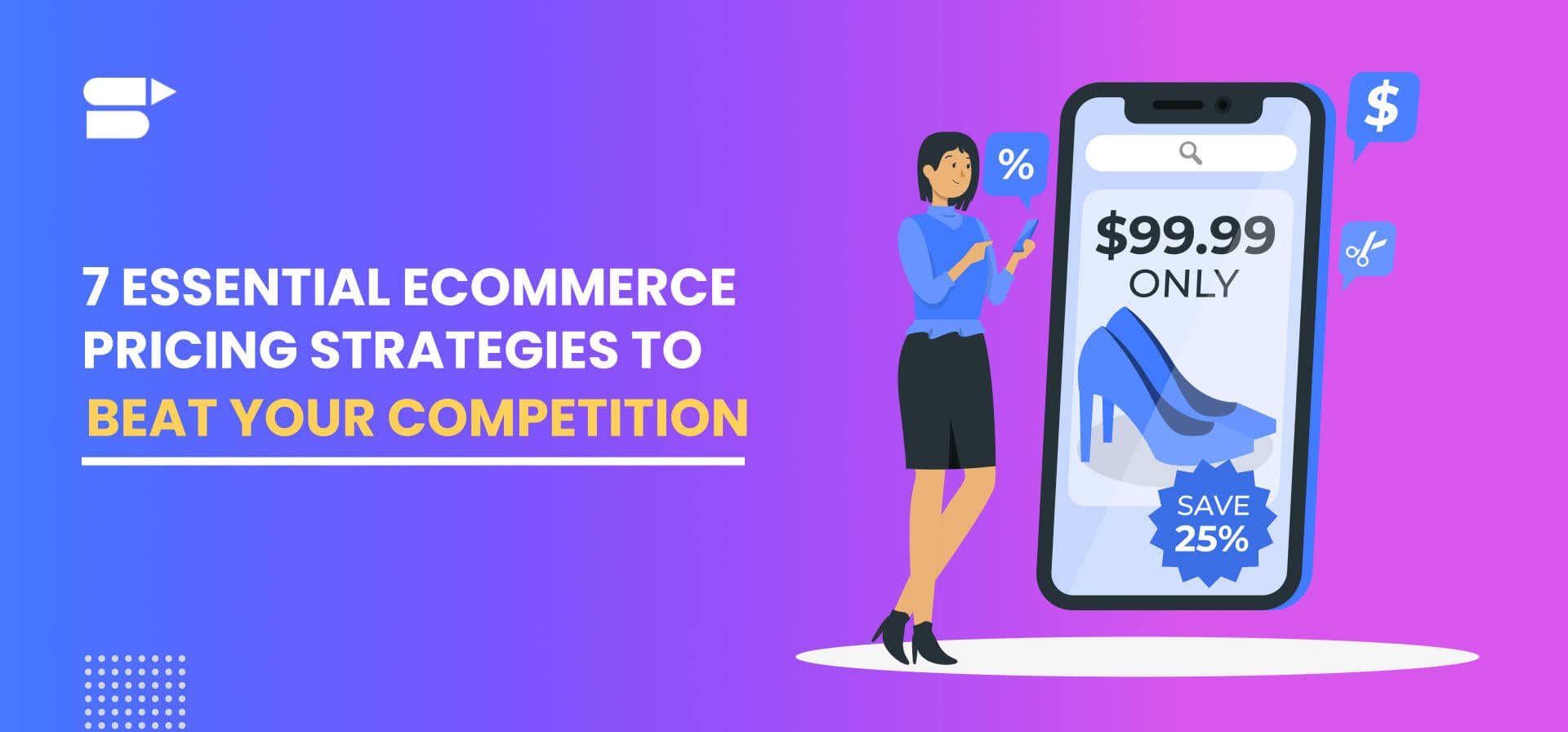
Vijay Kumar
November 28, 2023Very good insights!!
Clare Thomas
March 7, 2024Glad you liked the article.
Oscar
November 29, 2023Your blogs are helpful!!
Clare Thomas
March 7, 2024Thank you.
Larry
February 21, 2024Very informative. Info. Is appreciated.
Clare Thomas
March 7, 2024Very happy to hear that.
Michael Thomas
August 9, 2024Thanks for the guidance, Must read article for this week.
Clare Thomas
September 6, 2024Thanks for your valuable feedback.
Jacob Daniel
August 15, 2024Interesting take, Appreciate this.
Clare Thomas
September 6, 2024Thank you.
Aria Belle
August 20, 2024So informative, helped a lot.
Clare Thomas
September 6, 2024Happy to hear this.
Ethan Parker
August 30, 2024Appreciate the details, Great content for this week.
Clare Thomas
September 6, 2024Thanks for your valuable feedback.
Evelyn Paige
August 31, 2024Very inspiring, Really enjoyed this read.
Clare Thomas
September 6, 2024Glad you like the article.
Daniel Joseph
September 2, 2024Very informatic, Thank you for the updated content.
Clare Thomas
September 6, 2024You are welcome.
Scarlett Hayes
January 3, 2025I learned so much from this blog! It’s refreshing to see such a thorough and balanced take on how to buy Amazon return pallets. The examples you gave and the practical tips make this a must-read for anyone interested in this area. Great work!
jamescarter
January 3, 2025This is one of the most comprehensive articles I’ve read about Amazon return pallets. The information on finding reputable sources and the potential profitability was exactly what I was looking for. Thanks for sharing your expertise
Carlos Díaz
January 3, 2025Fantastic post! The step-by-step guide on how to buy amazon return pallets and understanding what to expect was super insightful. Your writing style is engaging and makes even complex topics easy to grasp. Thanks for sharing!
Luca Johnson
January 3, 2025Great article! I really enjoyed how you broke down the concept of Amazon return pallets and explained how and where to buy it. Thanks for sharing such valuable information.
Sophia Martinez
January 3, 2025I absolutely loved this article! The way you explained how to buy Amazon return pallets was not only clear but also very engaging. It’s fascinating to learn about how this concept works and the opportunities it can present for sellers or small business owners.